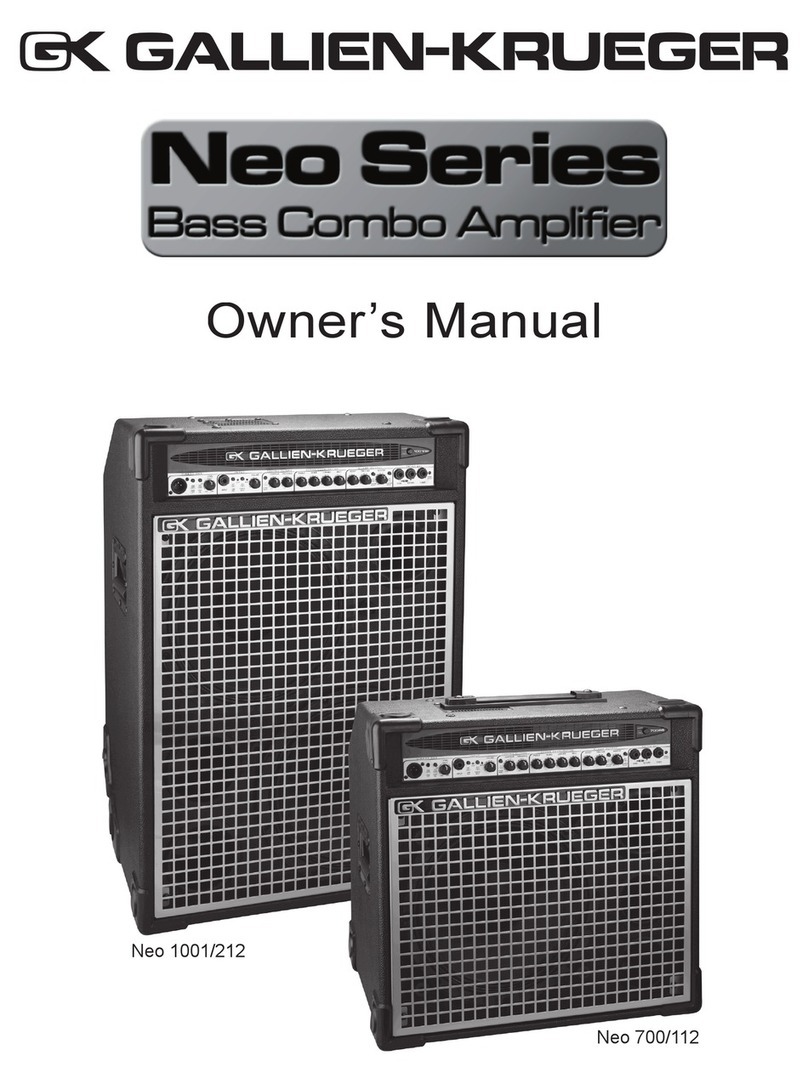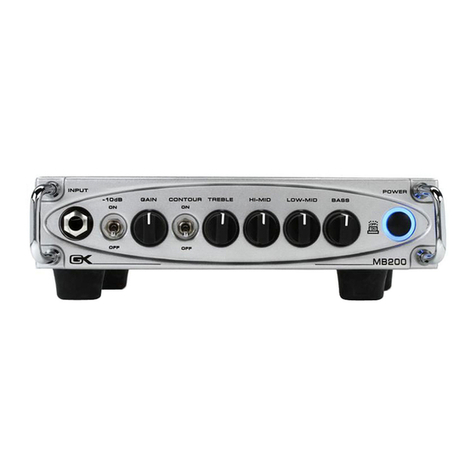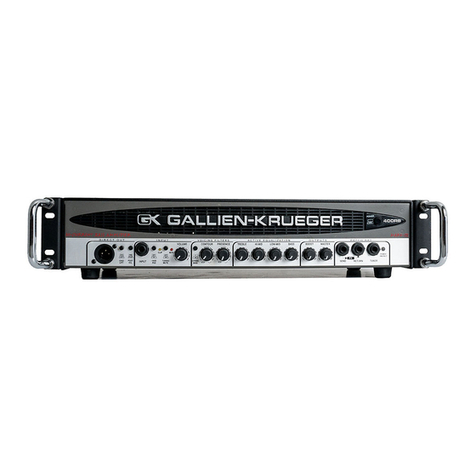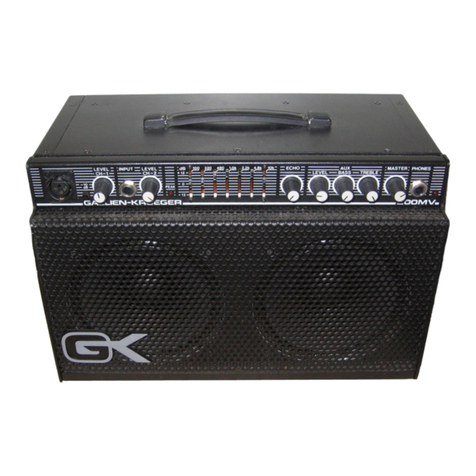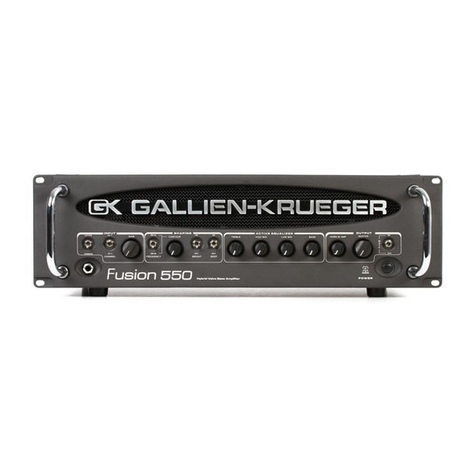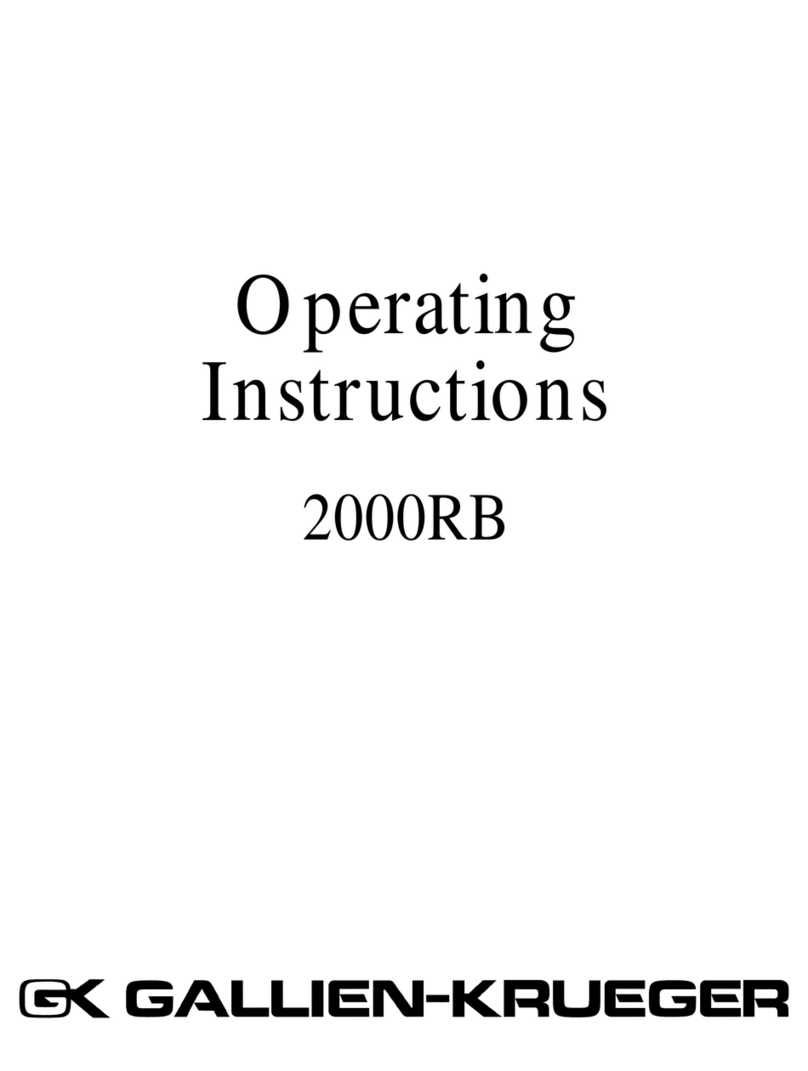
USB: Digital in/out provides recording, playback and
re-amp capability with USB equipped recording systems
and allows user to install firmware updates.
Aux: 3.5mm analog input for MP3 or other audio
playback device. Signal is introduced after EQ and
processing, prior to the Master Volume.
Phones: 3.5mm output for monitoring output through
headphones.
Pre/post: Selects the signal that is sent from the DI
output to be before or after the EQ.
DI: Electronically balanced output for connection to
mixer or other XLR equipped device using a standard
microphone cable.
Lift/gnd: Lifts or grounds pin 1 of the DI output. The
ground can be lifted to avoid ground loops.
9vdc: Attach supplied power supply here. Only negative
center/ 9vdc/500ma power supply should be connected.
Output: ¼” analog output for connection to amplifiers,
mixers as well as other pedals that are equipped with ¼”
inputs.
Send: ¼” analog output that enables the PLEX signal to
be sent to external devices after EQ and other processing,
prior to the Master Volume.
Return: ¼” analog input allows external signal to be
input into the PLEX after the EQ and other processing,
prior to the Master Volume.
Input: ¼” analog input to receive instrument signal.
Trim/Clip: The Trim knob adjusts the level of signal
coming in from the ¼” input. The Clip ring surrounding
the Trim knob flashes red when the incoming signal
begins to exceed the input circuit’s capability.
Compressor/Tuner: Engages/disengages the
compressor when pressed once. Double tapping quickly
activates the chromatic tuner. When tuner is active,
output of the PLEX is muted and all knobs are unlit. To
disengage tuner press twice quickly to return to play
mode.
LED Display: Displays the level of sub feature that is
selected as the knobs are pressed, tuning information
when tuner mode is active and gain reduction level when
compressor is engaged. *When Tuner mode is inactive
the sharp (#) indicator will light when the internal
processing capability has been exceeded due to extreme
EQ or volume settings.
Overdrive: Engages/disengages the overdrive section of
the PLEX. When Overdrive is active the Level/Drive
knob is illuminated blue.
***All rotary knobs have push functionality to access
the sub feature noted to the right of the main function
under each knob (main function/ sub function).
Pressing the knob activates the sub feature. Once
activated, the knob is lit blue and the LED display
shows the current level of sub function for 3 seconds.
Pressing the knob again within 3 seconds will toggle to
the next level. After 3 seconds the numeric display will
be unlit. Pressing any of the knobs once the display is
unlit will display that knobs current sub feature level
that is active. Pressing the knob again within 3
seconds will toggle to the next level. *See included
table for description of all sub features.
Bass/Bump: Rotary control allows the bass frequencies
to be boosted or cut. Pressing the knob activates the
Bump feature which applies varying levels of low
frequency enhancement.
Low Mid/Contour: Rotary control allows the low-mid
frequencies to be boosted or cut. Pressing the knob
activates the Contour feature to cut varying levels of mid
frequencies while boosting low and high frequencies.
Hi Mid/ Hi Cut: Rotary control allows the hi-mid
frequencies to be boosted or cut. Pressing the knob
activates the hi cut feature which applies varying levels
of high freq. reduction to remove unwanted clicking and
string noise.
Treble/Presence: Rotary control allows the treble
frequencies to be boosted or cut. Pressing the knob
activates the Presence feature which applies varying
levels of high freq. enhancement.
Thresh/Ratio: Activate by the pressing the
compressor/tuner button once. Once active the
Thresh/Ratio and Level/ Attack knobs are lit Blue.
Rotary control sets the threshold at which the compressor
is triggered by the incoming signal. Turning the knob
clockwise lowers the threshold ( increases the effect ) and
counter clockwise settings raise the threshold ( reduces
the effect). Pressing the knob activates the Ratio feature
which allows the selection of various compression ratios
from 2:1 to 20:1.
Level/Attack: Used in conjunction with Thresh/Ratio.
Rotary control sets the output volume of the compressor.
Pressing the knob activates the Attack feature which
selects various attack and release times of the
compressor.
Level/Drive: Activate by pressing the Overdrive
footswitch. Once active the level/Drive knob is lit Blue.
Rotary control sets the volume level of the overdrive
channel. Pressing the knob allows the selection of
multiple Drive intensities.
Master/Voice: Rotary control sets the main output
volume. Pressing the knob activates the Voice feature
which selects various EQ voicing characteristics.
This device complies with Part 15 of the FCC
Rules. Operation is subject to the following
two conditions:
This device may not cause harmful
interference, and
This device must accept any interference
received, including interference that may
cause undesired operation.
Note: This equipment has been tested and
found to comply with the limits for a Class B
digital device, pursuant to part 15 of the FCC
Rules.
Gallien-Krueger, Inc. 2234 Industrial Drive Stockton, CA 95206 (209) 234-7300
www.gallien.com
contact - info@gallien.com



